As you explore the 'Top 10 Guide: RSI in Forex Trading,' you'll discover how mastering the Relative Strength Index (RSI) can significantly impact your trading decisions.
Understanding the intricacies of RSI and its applications can be a game-changer in navigating the complexities of the forex market. By uncovering the nuances of RSI strategies and pitfalls to avoid, you'll be equipped with valuable insights to optimize your trading performance.
Stay tuned to uncover the key strategies and practical tips that can elevate your trading game and enhance your profitability in the forex arena.
Understanding Relative Strength Index (RSI)
In Forex trading, understanding the Relative Strength Index (RSI) is crucial for gauging market momentum and identifying potential entry and exit points. RSI is a technical indicator that measures the speed and change of price movements, providing insights into overbought and oversold market conditions.
Typically, RSI values above 70 suggest overbought conditions, indicating a possible reversal or pullback in price, while values below 30 signal oversold conditions, potentially signaling a buying opportunity. The default setting of RSI is based on a 14-period calculation, but traders can adjust this parameter based on their trading strategy and timeframe preferences.
Importance of RSI in Forex
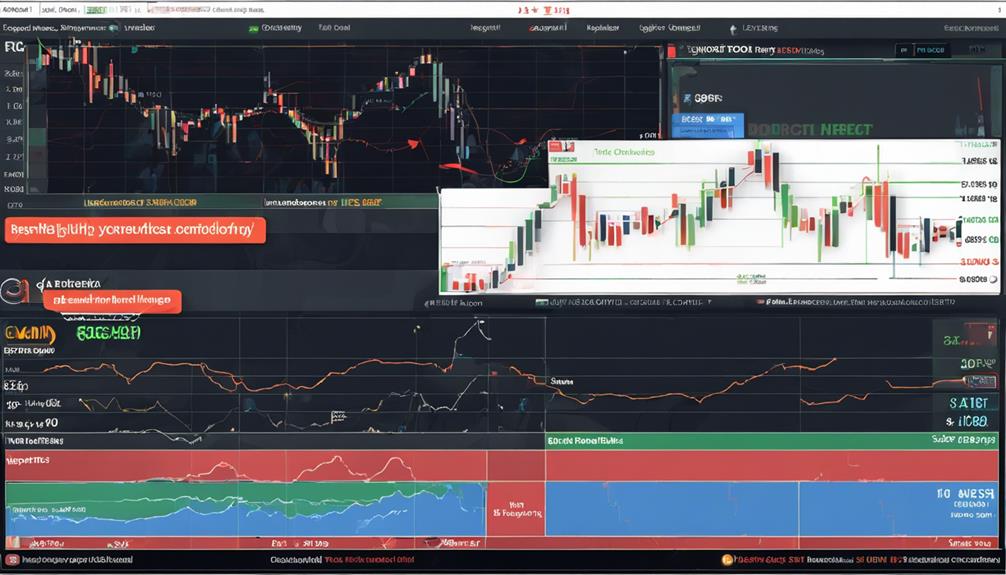
The significance of Relative Strength Index (RSI) in Forex trading becomes evident when traders need to pinpoint potential market opportunities based on price momentum. RSI, a popular momentum oscillator, helps traders identify overbought and oversold market conditions, aiding in making informed trading decisions.
Here's why RSI is important in Forex:
- RSI levels above 70 suggest potential selling opportunities.
- Levels below 30 indicate potential buying opportunities.
- Traders often combine RSI with other technical indicators to enhance their trading strategies, manage risk effectively, and adapt to varying market conditions.
RSI Calculation Explained

When calculating the Relative Strength Index (RSI), you compare average gains to average losses within a specified timeframe.
The formula for RSI is straightforward: RSI = 100 – (100 / (1 + RS)), where RS represents the ratio of up closes to down closes.
Understanding RSI values ranging from 0 to 100 is crucial, as levels above 70 signal overbought conditions while levels below 30 indicate oversold conditions.
RSI Formula Basics
By comparing average gains to average losses, the RSI formula calculates the Relative Strength (RS) in Forex trading. The RSI ranges from 0 to 100, with overbought conditions typically above 70 and oversold conditions below 30. The final RSI value is derived using the formula: RSI = 100 – (100 / (1 + RS)). RSI serves as a leading indicator, aiding traders in recognizing potential trend reversals. It can be seamlessly integrated into trading platforms like MetaTrader for analysis and decision-making.
- RSI formula compares average gains to average losses
- RSI ranges from 0 to 100, with overbought and oversold conditions
- RSI is a leading indicator for potential trend reversals
Interpreting RSI Readings
To interpret RSI readings effectively, analyze the calculated values within the context of market sentiment and potential price reversals. RSI calculation provides traders with insights into overbought conditions when RSI values exceed 70 and oversold conditions when below 30.
By understanding the RSI calculation, traders can gauge the level of market exhaustion and anticipate trend reversals using historical price data. The ratio of buying pressure to selling pressure is crucial in interpreting RSI readings, as it indicates the strength of potential price movements.
Interpreting RSI Signals
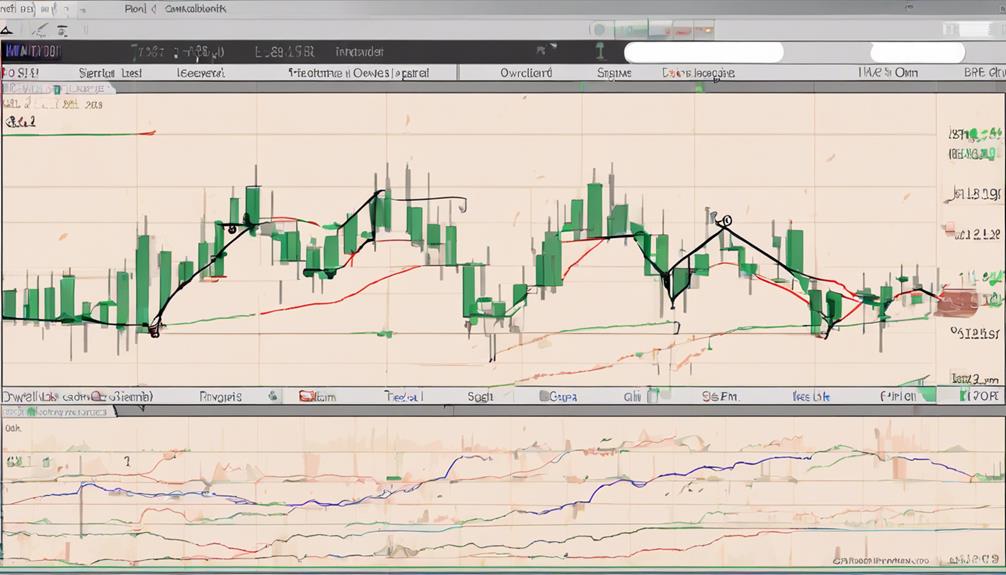
Interpreting RSI signals involves understanding how RSI values below 30 and above 70 indicate potential trading opportunities based on market conditions. When analyzing RSI signals, keep in mind the following:
- RSI values below 30 signal oversold conditions and potential buying opportunities.
- RSI values above 70 suggest overbought conditions and potential selling opportunities.
- RSI can help identify price reversal points at extreme levels.
RSI Overbought and Oversold Levels
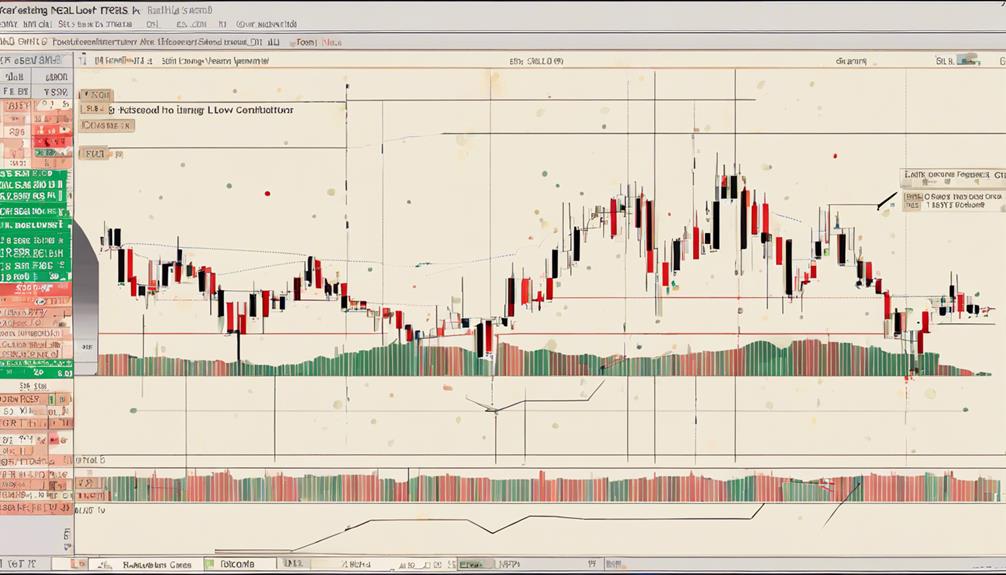
Understanding the significance of RSI Overbought and Oversold Levels is essential for effective decision-making in Forex trading.
The RSI overbought level, typically set at 70, indicates potentially overvalued market conditions, prompting traders to watch for price reversals.
On the other hand, the RSI oversold level, commonly set at 30, suggests potentially undervalued market conditions, signaling potential buying opportunities.
Traders use these RSI readings to time their entry and exit points, aligning their strategies with market conditions.
RSI Divergence Strategies
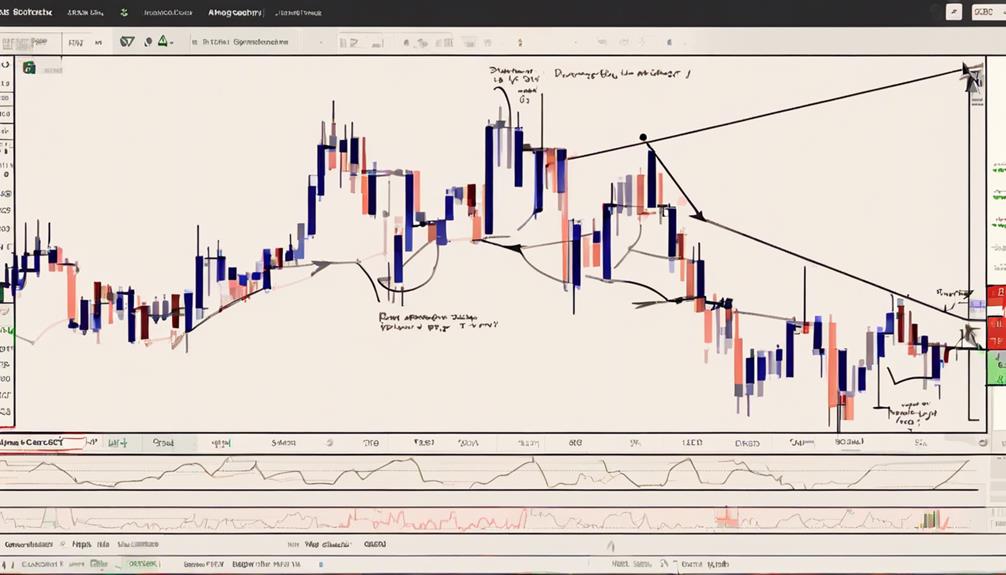
When considering RSI Divergence Strategies, it's crucial to grasp the concepts of RSI Bullish Divergence, RSI Bearish Divergence, and RSI Hidden Divergence. These strategies aim to uncover potential shifts in market sentiment and price direction based on RSI patterns diverging from price action.
RSI Bullish Divergence
Utilizing the RSI Bullish Divergence strategy in your forex trading arsenal can provide valuable insights into potential market reversals and optimal entry and exit points. When observing this divergence, where price forms a lower low while RSI forms a higher low, it indicates a possible price reversal. Here are key points to consider:
- RSI Bullish Divergence signifies weakening bearish momentum and the potential buildup of bullish pressure.
- Traders often use this signal as confirmation for entering long positions or as an indication to exit short positions.
- This divergence is crucial for identifying trend reversals, and when combined with other technical indicators, it can enhance trading decisions and improve overall accuracy.
RSI Bearish Divergence
Spotting RSI Bearish Divergence in forex trading can provide valuable insights into potential market reversals and guide strategic trading decisions effectively. This divergence occurs when price forms a higher high while the RSI indicator forms a lower high, indicating weakening momentum and a possible price reversal to the downside.
Traders often see this as a warning sign to consider exiting long positions or entering short positions. It's a common strategy for identifying trend reversals on different timeframes. RSI Bearish Divergence becomes a potent signal when confirmed by other technical indicators or price action analysis, enhancing its reliability in predicting market movements.
Remember to incorporate this pattern into your trading strategy for a comprehensive approach to analyzing market dynamics.
RSI Hidden Divergence
RSI Hidden Divergence, a crucial concept in forex trading strategies, reveals underlying market dynamics that may not be immediately evident through price action analysis alone. Traders rely on this divergence to identify potential trend reversals, whether indicating underlying weakness or strength.
By recognizing RSI Hidden Divergence, traders can anticipate shifts in market sentiment and strategically plan their entry and exit points for trades. This divergence acts as a key tool in confirming price trends and providing valuable insights into market dynamics, offering traders enhanced trading opportunities.
Utilizing RSI Hidden Divergence effectively can lead to more informed decision-making processes and optimized trading strategies in the forex market.
Using RSI With Other Indicators

When combining the Relative Strength Index (RSI) with other technical indicators in Forex trading, it's essential to consider how these tools can work together to enhance your analysis and decision-making process.
Pairing RSI with MACD can help spot divergence signals for potential trend reversals.
Using RSI alongside Moving Averages can validate price trends indicated by RSI.
Combining RSI with Bollinger Bands aids in pinpointing overbought or oversold conditions more precisely.
Integrating RSI with Fibonacci retracement levels adds extra confirmation for trade setups.
Employing RSI along with Parabolic SAR can improve trend identification and refine entry/exit points in trading strategies.
RSI for Trend Identification
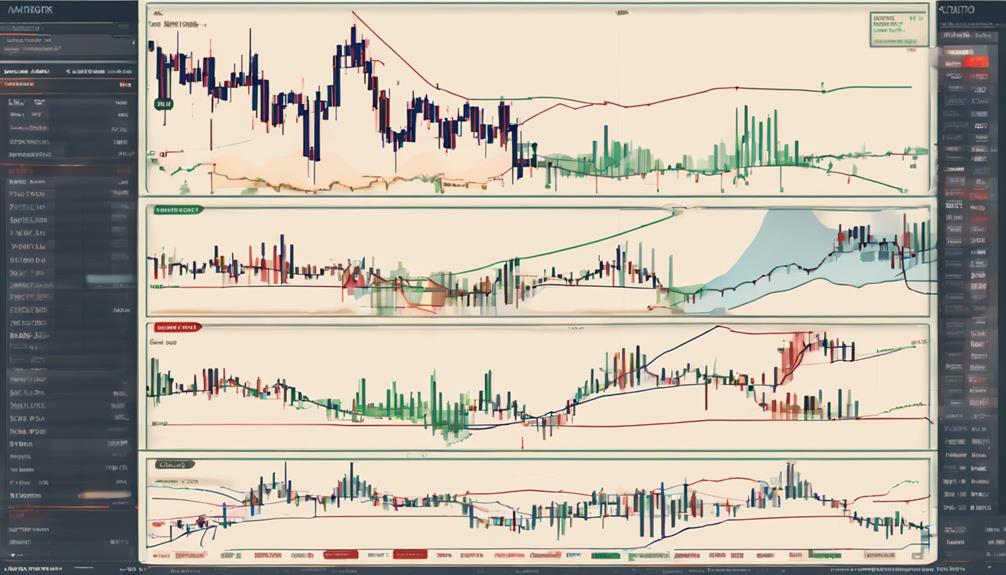
To accurately identify trends in the forex market using the Relative Strength Index (RSI), you must analyze price movements over a specific period and interpret RSI values accordingly.
When utilizing RSI for trend identification, consider the following:
- RSI values above 50 indicate an uptrend, while values below 50 suggest a downtrend.
- Trend identification with RSI is based on comparing current price levels to historical data.
- RSI can confirm trend direction when used in conjunction with other technical indicators.
RSI as a Risk Management Tool
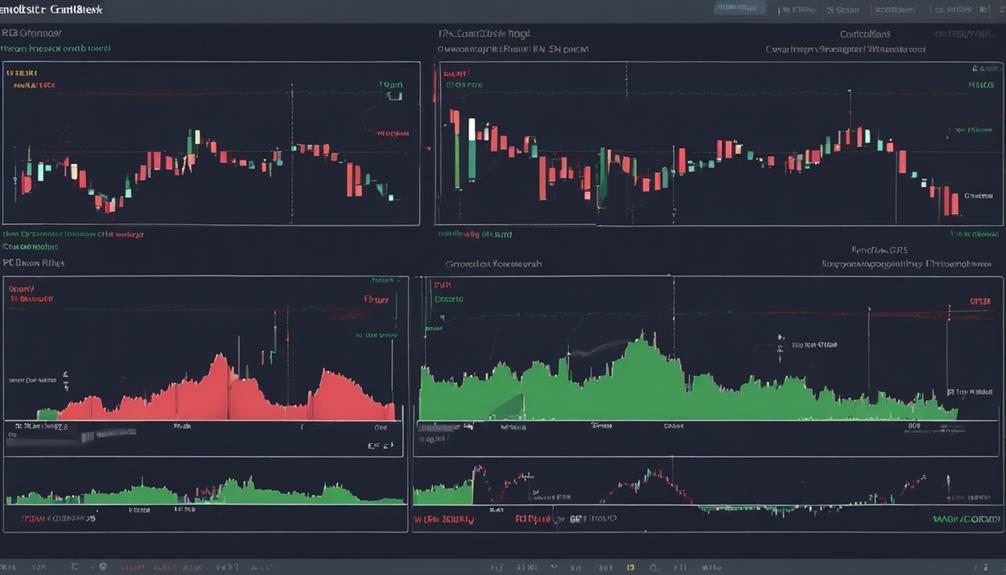
Utilizing the Relative Strength Index (RSI) as a risk management tool in forex trading involves monitoring market conditions to identify potential risks and make informed trading decisions. RSI can help traders recognize overbought or oversold market conditions, aiding in determining optimal entry and exit points to manage risk effectively.
When RSI values exceed 70, it may signal an increased risk of price decline, prompting caution in trading decisions to avoid potential losses. Integrating RSI into risk management strategies aligns trades with market conditions, enhancing trading discipline and decision-making processes.
Can RSI Techniques for Crypto Trading be Applied to Forex Trading as Well?
Yes, many of the RSI crypto trading techniques can be applied to Forex trading as well. The Relative Strength Index (RSI) is a versatile tool that can help traders identify overbought or oversold conditions and potential trend reversals in both cryptocurrency and foreign exchange markets.
Implementing RSI in Trading Strategies
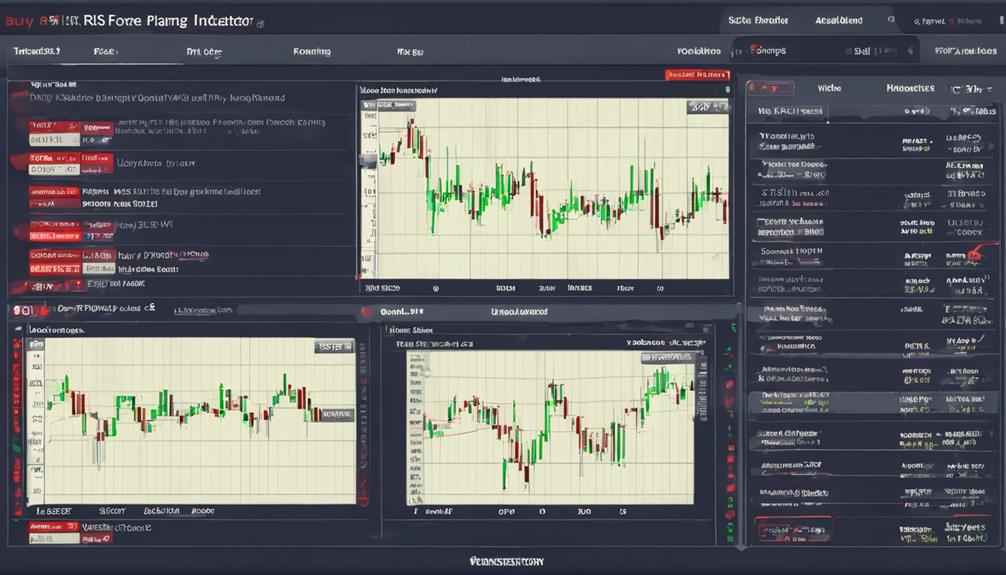
Integrating RSI into your trading strategies can significantly enhance your ability to identify market conditions and make informed decisions in forex trading. When implementing RSI in your trading strategies, consider the following:
- RSI levels below 30 indicate potential buy opportunities in oversold conditions.
- RSI levels above 70 suggest potential sell signals in overbought conditions.
- The RSI 50 level acts as a dividing line between bullish and bearish territories.
Frequently Asked Questions
What Is the Best Forex Rsi?
For the best forex RSI, consider default 14 periods for swing trading. Intraday traders may prefer 9-11 periods for more signals. Longer-term traders could use 20-30 periods. Adjust RSI settings based on your style and market conditions.
What Is the Best Strategy for RSI Trading?
To excel in RSI trading, combine it with indicators like MACD and moving averages. Test various settings in a demo account for a suitable strategy. Adapt to market conditions for consistent profits. Manage risks effectively.
Which RSI Is Most Accurate?
For the most accurate RSI, experiment with various settings based on your trading style and market conditions. Test different parameters to find the ideal balance between responsiveness and noise reduction, tailored to your preferences and asset volatility.
What Is the Best RSI to Buy?
When looking to buy, aim for RSI values below 30 for oversold conditions hinting at possible price rises. For selling, RSI above 70 signals overbought markets poised for potential declines. Maintain a watchful eye on RSI around 50 for balanced trading.
Conclusion
In conclusion, mastering the use of RSI in forex trading can be a game-changer for traders looking to gain an edge in the market.
By combining RSI with other indicators, you can paint a clearer picture of market conditions and make more informed trading decisions.
Remember, a little knowledge goes a long way, so keep honing your skills and adapting your strategies to stay ahead of the curve in the dynamic world of forex trading.
